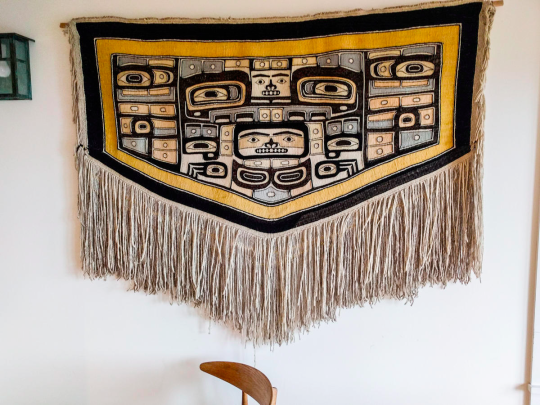a lil fairy ♐☉♏🌙♋⬆️🌵💫🌹if you see me consider yourself lucky
Don't wanna be here? Send us removal request.
Text
every lil nas x music video post-montero is going to be perfectly calculated to make conservative podcasters burst a vein
14K notes
·
View notes
Text
how many people could be working on actual problems in the world instead of being forced to do jobs that they are over-qualified for just because they dont want to go homeless and starve?
198K notes
·
View notes
Text
To be clear, I am absolutely 100 percent supportive of dishonest children. I endorse minors who swindle, who bamboozle, who are treacherous and who commit acts of fraud. In fact, it is moral and righteous. And you probably deserve it.
13K notes
·
View notes
Link
Sara Jacobsen, 19, grew up eating family dinners beneath a stunning Native American robe.
Not that she gave it much thought. Until, that is, her senior year of high school, when she saw a picture of a strikingly similar robe in an art history class.
The teacher told the class about how the robe was used in spiritual ceremonies, Sara Jacobsen said. “I started to wonder why we have it in our house when we’re not Native American.”
She said she asked her dad a few questions about this robe. Her dad, Bruce Jacobsen, called that an understatement.
“I felt like I was on the wrong side of a protest rally, with terms like ‘cultural appropriation’ and ‘sacred ceremonial robes’ and ‘completely inappropriate,’ and terms like that,” he said.
“I got defensive at first, of course,” he said. “I was like, ‘C’mon, Sara! This is more of the political stuff you all say these days.’”
But Sara didn’t back down. “I feel like in our country there are so many things that white people have taken that are not theirs, and I didn’t want to continue that pattern in our family,” she said.
The robe had been a centerpiece in the Jacobsen home. Bruce Jacobsen bought it from a gallery in Pioneer Square in 1986, when he first moved to Seattle. He had wanted to find a piece of Native art to express his appreciation of the region.

The Chilkat robe that hung over the Jacobsen dining room table for years. Credit Courtesy of the Jacobsens
“I just thought it was so beautiful, and it was like nothing I had seen before,” Jacobsen said.
The robe was a Chilkat robe, or blanket, as it’s also known. They are woven by the Tlingit, Haida and Tsimshian peoples of Alaska and British Columbia and are traditionally made from mountain goat wool. The tribal or clan origin of this particular 6-foot-long piece was unclear, but it dated back to around 1900 and was beautifully preserved down to its long fringe.
“It’s a completely symmetric pattern of geometric shapes, and also shapes that come from the culture,” like birds, Jacobsen said. “And then it’s just perfectly made — you can see no seams in it at all.”
Jacobsen hung the robe on his dining room wall.
After more needling from Sara, Jacobsen decided to investigate her claims. He emailed experts at the Burke Museum, which has a huge collection of Native American art and artifacts.
“I got this eloquent email back that said, ‘We’re not gonna tell you what to go do,’ but then they confirmed what Sara said: It was an important ceremonial piece, that it was usually owned by an entire clan, that it would be passed down generation to generation, and that it had a ton of cultural significance to them.“
Jacobsen says he was a bit disappointed to learn that his daughter was right about his beloved Chilkat robe. But he and his wife Gretchen now no longer thought of the robe as theirs. Bruce Jacobsen asked the curators at the Burke Museum for suggestions of institutions that would do the Chilkat robe justice. They told him about the Sealaska Heritage Institute in Juneau.
When Jacobsen emailed, SHI Executive Director Rosita Worl couldn’t believe the offer. “I was stunned. I was shocked. I was in awe. And I was so grateful to the Jacobsen family.”
Worl said the robe has a huge monetary value. But that’s not why it’s precious to local tribes.
“It’s what we call ‘atoow’: a sacred clan object,” she said. “Our beliefs are that it is imbued with the spirit of not only the craft itself, but also of our ancestors. We use [Chilkat robes] in our ceremonies when we are paying respect to our elders. And also it unites us as a people.”
Since the Jacobsens returned the robe to the institute, Worl said, master weavers have been examining it and marveling at the handiwork. Chilkat robes can take a year to make – and hardly anyone still weaves them.
“Our master artist, Delores Churchill, said it was absolutely a spectacular robe. The circles were absolutely perfect. So it does have that importance to us that it could also be used by our younger weavers to study the art form itself.”
Worl said private collectors hardly ever return anything to her organization. The federal Native American Graves Protection and Repatriation Act requires museums and other institutions that receive federal funding to repatriate significant cultural relics to Native tribes. But no such law exists for private collectors.

Bruce and Gretchen Jacobsen hold the Chilkat robe they donated to the Sealaska Heritage Institute as Joe Zuboff, Deisheetaan, sings and drums and Brian Katzeek (behind robe) dances during the robe’s homecoming ceremony Saturday, August 26, 2017. Credit NOBU KOCH / SEALASKA HERITAGE INSTITUTE
Worl says the institute is lobbying Congress to improve the chances of getting more artifacts repatriated. “We are working on a better tax credit system that would benefit collectors so that they could be compensated,” she said.
Worl hopes stories like this will encourage people to look differently at the Native art and artifacts they possess.
The Sealaska Heritage Institute welcomed home the Chilkat robe in a two-hour ceremony over the weekend. Bruce and Gretchen Jacobsen traveled to Juneau to celebrate the robe’s homecoming.
89K notes
·
View notes
Text
that episode of pokemon where team rocket joins a beach beauty contest and james participates in a tiny bikini and has giant boobs. what did they mean by that
147K notes
·
View notes
Text
"neurodivergent people are bad at picking up social cues" statistically untrue every day i pick up on millions of social cues that literally do not exist
89K notes
·
View notes
Text
sometimes i just want to laugh at how absurd everything is. like, jeff bezos has enough money to literally end the war in yemen. he could literally end it. nearly any celebrity in the world has the money to fix the flint water crisis. like there is a handful of rich people who, if they just put their money where their fucking mouths were, could solve so many problems. but they dont!!! they just buy another house, or a car, or a company where they don’t pay their workers fair wages so they can get richer. it’s just!!!!!!! sometimes i want to laugh bc it’s so absurd and this is why we say eat the rich.
77K notes
·
View notes
Note
Do you have any kinks?
That second sleep after you’ve woken up too early
89K notes
·
View notes
Text
How to Stay Cool Without A/C
A lot of Northerners were very kind during the freeze in Texas this winter with tips on how to stay warm for people who had lost heat. This is an attempt to repay that favor for people in the Pacific Northwest and other northerly locations who are facing dangerous heatwaves without built-in A/C. My qualifications to give this advice are that I was a summer camp attendee and counselor with no A/C for many summers in humid-ass central Texas with highs over 100F basically every day. Hopefully some of it will be of use to somebody who isn’t used to the heat.
1) PUT ICE WATER IN YOUR BODY. Ice water is your best friend and the #1 way to drop your body temp. Drink more than you think you need (like, at least a half-gallon a day and closer to a gallon or more if you have to be outside doing manual work all day) to cool your insides down and stay hydrated. Have some bananas, trail mix, or a sports drink to help replace the electrolytes you’re sweating out and keep you from getting cramps, but try to have most of your fluid intake be water. I used to take a giant water bottle, fill it part way with water, and freeze it on its side so the ice would slowly melt over the course of the day and my water would stay cold longer.
2) PUT ICE WATER ON YOUR BODY. Cold water, ice, or a damp rag on your head and neck, the backs of your knees, the insides of your elbows, and under your armpits will help you cool down the best, because your blood runs close to the surface in those places. Cold packs designed for injuries or lunchboxes, bags of frozen vegetables, etc. can substitute for ice water as well. Even room-temp water will pull heat away from your body better than body-temp sweat will, especially if it’s humid, so if you don’t have enough ice, the sink, bathtub, or hose will do fine. Dipping your feet into cool water helps a ton as well if you have to sit and work and don’t want your clothes to be wet.
3) WHERE AM I SUPPOSED TO GET SO MUCH ICE? To make sure you have enough ice to last you the weekend, especially through a potential power failure, I recommend getting a cooler (even one of the cheap styrofoam ones is fine in a pinch) and ~10lbs of ice from the big coolers at most gas stations, drug stores, or grocery stores. Try to do this now, before anybody loses power, and store as much in your freezer as you have space for to keep it from melting. You can use it for drinking or to keep your food cold in a power failure. You can use it for a party later if you don’t end up needing it during the heat wave, but you will probably be very happy you had it.
4) AIR FLOW. Being inside a room with the windows closed is the worst possible place to be if you don’t have A/C, because glass windows create a greenhouse effect and the hot air can’t escape. If at all possible, find a shaded place outside where you can catch any possible breeze. If not, open all your windows and, if it’s safe, doors so you can get a cross-breeze. Hopefully you have window screens to keep pets and kids in and bugs out. If not, you’re gonna have to do your own risk assessment. Fans of all sizes and descriptions are your friend; ceiling fans should be set to spin counterclockwise in summer. Even if you have A/C, finding or making a handheld fan will be worthwhile for when you have to venture outside. If you aren’t in a situation where you need to conserve ice, blowing air over a cooler full of ice will give you a makeshift A/C.
5) SHADE. You will probably immediately notice that direct sunlight is a miserable place to be when it’s super hot. Find or make a shaded location, and don’t be afraid to move around to avoid the sun as the day goes on. Stay on the shady side of the sidewalk whenever you walk someplace. Try to shade your windows as best you can without obstructing airflow using blinds, curtains, shutters, etc. especially if they’re directly in the path of the sun. Do not be a jerk to your neighbors if their shade solutions are ugly. If you can get a shade for your car windshield, I highly recommend it, as the steering wheel, dashboard, seatbelts, and even seats can quickly become too hot to touch in a sealed car and will hold that heat for a long time.
6) CLOTHING. Light-colored, loose clothing that is as close to 100% cotton or linen as you can find is your friend. It doesn’t necessarily have to be short as long as it’s breathable. You will sweat through anything you wear, so I personally prefer only wearing machine-washable stuff. Sun hats, sunscreen, sunglasses, aloe gel for sunburns, mosquito repellent, anti-chafing supplies, etc are all worth looking into if you aren’t used to spending time in the heat.
7) TIMING. Try to stay out of the sun and avoid doing anything strenuous in the middle of the day when the heat is the worst. If you have a choice, plan to be more active early in the morning and late at night when the temperature is more bearable, and take a break in the middle of the afternoon.
Here’s a graphic from the CDC about how to recognize heat-related illnesses and what to do about them. I will add to this that if it’s hot and you stop sweating, you are getting to a dangerous level of dehydration and need to drink something BEFORE you start having more serious problems.

62K notes
·
View notes









